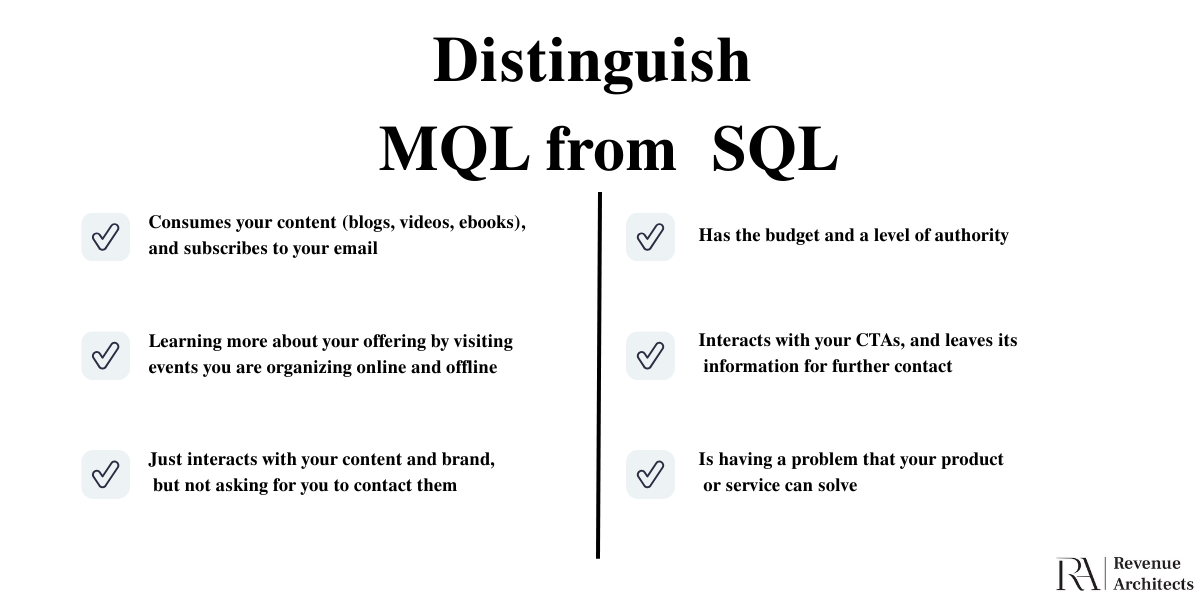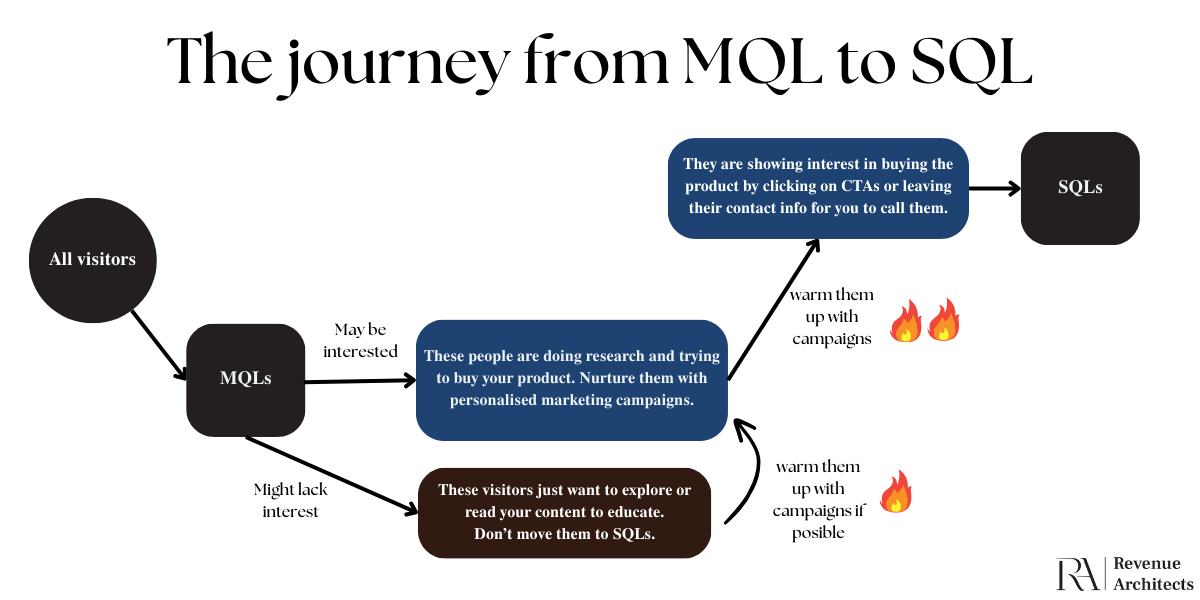Understanding the journey from Marketing-Qualified Leads (MQL) to Sales-Qualified Leads (SQL) is essential for businesses to drive revenue and growth. This process is critical in every company’s sales funnel, and it involves converting potential customers who have shown interest in a product or service into sales-ready leads. In this article, we will explore some tactics that can help simplify the conversion process and guide MQLs through the sales funnel to become SQLs.

How do you recognize MQLs?
Marketing Qualified Leads (MQLs) are potential customers who have shown a genuine interest in your product or service and are more likely to convert into paying customers. These leads can be generated in various ways, such as downloading a product brochure, subscribing to a newsletter, attending a webinar, or requesting a product demo.
They might also have spent significant time on your website, engaging with your content, or interacting with your brand on social media. Any action that indicates they are interested in learning more about your offering can be considered an MQL.
If you nurture them with specific marketing campaigns, you can increase the likelihood of a successful conversion.
How do you recognize SQLs?
Now that we know what an MQL is, it is easier to understand that the difference between SQL and MQL lies in the customer’s readiness to buy, which is different for each company. In its essence, SQLs are potential customers who have the necessary budget, authority, and a problem that your product can solve. Additionally, sales teams should receive feedback from marketing on past interactions with this lead. Only when all these indicators are present, sales teams can proceed with discovery calls.
What are the criteria for defining MQL and SQL?
Before passing MQLs to sales, it’s important to understand the criteria for defining each. In some industries, the distinction can be vague. Having a reliable method to categorize leads allows for precise delivery of the right content at the right time. Lead nurturing can significantly increase engagement by 57% and conversions by 63% when personalized. Not only does this boost conversion rates, but it also saves time by creating purposeful content. On the other hand, recognizing these differences requires a lot of experience.

For this purpose, we can use four main signals that can help distinguish the strength of a lead:
1. Lead behavior of MQL and SQL
When it comes to lead behaviour, it’s important to differentiate between Marketing Qualified Leads (MQLs) and Sales Qualified Leads (SQLs). MQLs typically engage by downloading free content and subscribing to email lists, showing their interest in learning more about a product or service. On the other hand, SQLs take a more direct approach by initiating contact with sales representatives, indicating a higher level of interest and potential readiness to make a purchase.
2. Lead demographics
In terms of lead demographics, MQLs often consist of younger individuals who are eager to expand their knowledge and learn more about a particular offering. In contrast, SQLs are typically more experienced professionals with decision-making power and are less interested in basic product information. They prefer data, case studies, and relevant industry news to support their informed decision-making process.
3. Lead psychographics
MQLs are often characterized by enthusiasm and an optimistic outlook. They are open to new ideas and are eager to explore possibilities. In contrast, SQLs are shaped by their knowledge and experience, leading to a more pragmatic and realistic approach to evaluating products or services.
4. Lead scoring
Lead scoring is a method that combines various data points about prospects and assigns points based on factors such as age, occupation, job experience, and educational level. This approach helps to gain insights into the attitudes, values, and interests of a person based on their demographic and behavioural data. However, it’s important to use lead scoring with care, as it may not always provide a complete picture of a lead’s potential.
How to hand marketing qualified leads (MQLs) over to sales teams
As we mentioned above, there are no two identical companies, so there is not only one way to hand your marketing-qualified leads to your sales team, so they can become SQLs. But, here is a short recipe on what you should pay attention to make this transition smooth and efficient.
First, conduct a brainstorming session with your team to identify the specific qualities that make a lead qualify as a sales lead in your context.
Implement a lead scoring system using your CRM software to automatically prioritize leads and streamline the process.
Develop a nurturing program for marketing leads to convert them into SQLs. Tailor your content to suit your potential buyers and personalize it based on gender, demographics, or interests.
Foster open communication between the sales and marketing teams. Encourage regular meetings and discussions, and consider organizing meetups to share challenges and insights for better collaboration and results. This way, you will have the chance to learn from mistakes and create better lead-nurturing tactics. When those are in place, you will be able to decide more easily who is ready for a discovery call, and that will affect the speed of your sales cycle and, eventually, your revenue.

What are the usual problems when it comes to moving from MQL to SQL?
Based on our experience, many companies don’t do A/B testing of the lead nurturing campaigns. For example, when we worked with an innovative company in the field of water restoration, we saw this type of problem.
We had to split their MQLs into two groups and create different campaigns. When we tracked the data, we saw which campaign worked better and managed to create a 15% higher conversion rate.
Another common problem is missing to find salse cycle bottlenecks. Some companies don’t analyze data from their CRMs properly and fail to see significant issues with the speed of moving SQL to opportunity. When we recommended faster and more clear follow-up process, this client managed to reduce their sales cycle length, and that improved their general efficiency.
Recognize these problems as your own or need help with other parts of your sales cycle? We can help with our personalized approach. Don’t hesitate to contact us and book a discovery call now!

